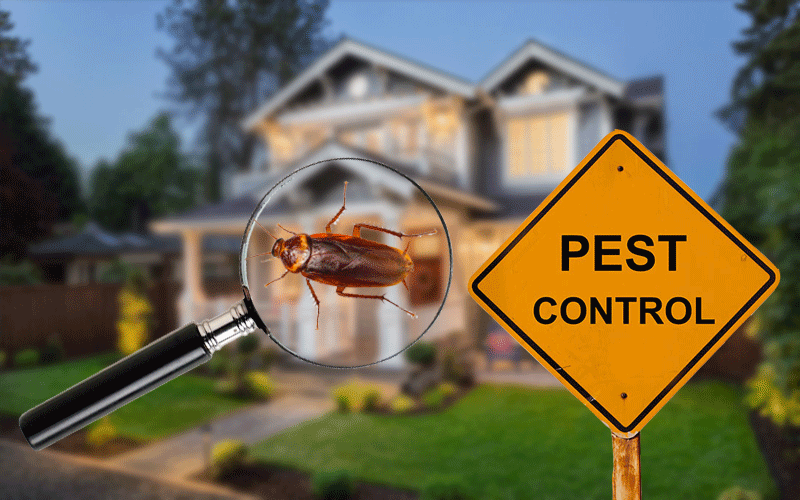Bed Insect Therapy Break Down: Contrasting Chemical Vs. Non-Chemical Solutions
In the realm of parasite control, particularly when taking care of the persistent issue of bed insects, the selection in between chemical and non-chemical treatment remedies can be a crucial one. Both methods use distinctive advantages and disadvantages, affecting variables such as effectiveness, security factors to consider, and total cost. By checking out the nuanced details of each technique, a more clear understanding of which course to go after in addressing a bed bug infestation can be attained.
Efficiency of Chemical Treatments
Chemical therapies for bed insect problems have been extensively recognized for their fast and powerful effectiveness in getting rid of these insects. When considering the performance of chemical therapies, it is vital to comprehend that they can provide a comprehensive and quick option to a bed pest trouble. Professional pest control specialists typically count on pesticides to target bed pests at various stages of their life cycle, including fairies, adults, and eggs. These chemicals usually work by interrupting the bed bugs' worried system, bring about paralysis and ultimate death.
Moreover, chemical therapies have the benefit of providing recurring results, indicating that they can proceed to get rid of bed bugs also after the preliminary application. This recurring action is particularly helpful in combating any kind of prospective re-infestations. Additionally, the fast action of chemical treatments can bring alleviation to individuals facing serious bed bug problems, permitting them to regain control of their home rapidly.
Safety And Security Issues With Chemical Solutions
One essential aspect that needs careful consideration when making use of chemical options for bed bug therapy is making sure the security of residents and the environment. Direct exposure to specific chemicals used in bed bug therapies can lead to respiratory system problems, skin irritability, or other damaging reactions, particularly in people with pre-existing conditions or level of sensitivities.
Furthermore, the ecological impact of chemical options is another considerable factor to consider. Some pesticides made use of in bed pest treatments may be harmful to helpful insects, wild animals, and communities if they seep right into the soil or water systems. It is necessary to utilize chemical therapies deliberately, following security standards, and considering less harmful choices to minimize these risks and guarantee the reliable and safe management of bed insect invasions.
Advantages of Non-Chemical Strategies
Taking into consideration the potential security worries and ecological influence connected with chemical solutions for bed bug treatment, exploring non-chemical methods offers an encouraging alternative with several distinct benefits. Non-chemical approaches provide a more secure choice for households, particularly those with individuals, kids, or animals conscious harsh chemicals. These approaches eliminate the threats of direct exposure to hazardous compounds, decreasing the capacity for unfavorable wellness impacts. Moreover, non-chemical treatments are environmentally friendly, as they do not add to air or water contamination, making them a sustainable choice for parasite control.
Furthermore, non-chemical solutions can be efficient in targeting bed pests, consisting of hard-to-reach locations where chemical treatments may not permeate Extra resources - A1 pest control services charlotte. Methods such as warm treatment, vacuuming, heavy steam cleansing, and bed mattress coverings give comprehensive removal without the use of dangerous chemicals.
Limitations of Non-Chemical Treatments

Additionally, non-chemical treatments usually require several applications to attain successful removal. This can be taxing and might not constantly guarantee complete removal of all bed bugs and their eggs, specifically in concealed or hard-to-reach areas.
Moreover, the success of non-chemical therapies heavily depends on correct execution and thoroughness, which can be challenging for people without expert proficiency. Insufficient application of non-chemical techniques might cause insufficient eradication, resulting in consistent invasions and the demand for added therapies.
Consequently, while non-chemical therapies have their benefits, it is necessary to acknowledge these restrictions and consider them when figuring out one of the most reliable strategy for managing bed bug invasions.
Expense Comparison: Chemical Vs. Non-Chemical Options
Provided the restrictions connected with non-chemical treatments, a crucial facet to review in the context of bed pest monitoring is the expense contrast in between chemical and non-chemical choices. Chemical therapies normally include the application of pesticides by experts, which can range from $250 to $900 per space, depending upon the extent of the problem and the dimension of the area to be see post treated. On the other hand, non-chemical therapies like warmth therapy or vapor can be more expensive, with expenses varying from $1,000 to $6,000 for an entire home. While the preliminary expense of chemical therapies may appear lower, multiple therapies might be needed to fully eliminate the invasion, potentially enhancing the general cost. On the various other hand, non-chemical choices might provide a much more sustainable and environment-friendly remedy, although they can be cost-prohibitive for some individuals. Ultimately, when considering the expense of bed pest treatment options, it is very important to consider the ahead of time expenses against the efficiency and lasting sustainability of the selected technique.
Final Thought

Taking into consideration the potential safety and security problems and environmental impact connected with chemical solutions for bed pest therapy, checking out non-chemical methods provides an encouraging option with several distinct advantages.Offered the restrictions associated with non-chemical therapies, an essential facet to assess in the context of bed bug administration is the cost contrast in between chemical and non-chemical choices. In comparison, non-chemical treatments like heat therapy or steam can be extra pricey, with costs ranging from $1,000 to $6,000 for an entire home. While the first expense of chemical treatments may appear reduced, numerous therapies may be required to fully eliminate the problem, potentially boosting the overall cost.In conclusion, when comparing chemical and non-chemical bed bug therapy alternatives, it is important to take into consideration efficiency, safety, benefits, limitations, and expense.